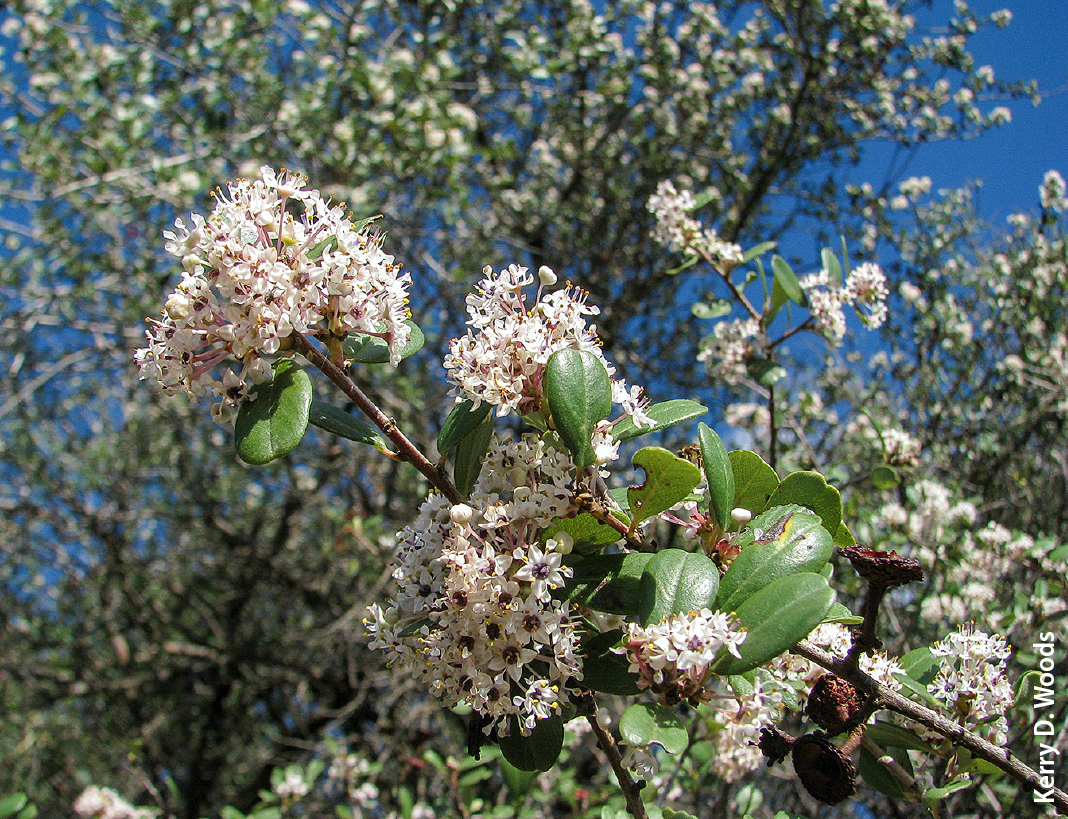All Issues
Coexisting with chaparral
Publication Information
California Agriculture 71(2):55-56. https://doi.org/10.3733/ca.2017a0013
Published online April 12, 2017
NALT Keywords
Summary
Long-term studies at Hopland Research and Extension Center find no simple answers for reducing fire risk while conserving biodiversity.
Full text
More than half of California's 20 largest wildfires have involved chaparral ecosystems. The oily shrubs burn hot — up to 3,500°F, with flames that can reach 50 feet high.
Because chaparral is found in and around many of the state's largest population centers, chaparral systems include a great deal of what's known as wildland-urban interface. That makes chaparral a major focus of efforts to manage fire risk by reducing wildland fuels loads — typically through prescribed fire and mastication (mechanical chopping).
Because chapparal ecosystems are often found near California's urban areas, they are a major focus for fuel reduction efforts such as mastication treatments and controlled burns. Trials have been conducted since 2001 at HREC to determine the effect of these treatments on biodiversity.
Chaparral is also one of California's most biodiverse ecosystem types, which sets another imperative for land managers: avoiding the degradation or loss of chaparral systems.
UC ANR's Hopland Research and Extension Center (HREC) in southern Mendocino County provides a unique experimental location to study the effects on chaparral systems of fuels reduction treatments. There's abundant chaparral on the 5,300-acre site, it's remote enough to make burning safe and practical, and researchers can conduct long-term studies; some data sets collected at HREC span more than 40 years.
Since 2001, Scott Stephens, a professor in the Department of Environmental Science, Policy and Management at UC Berkeley, and his collaborators have studied the ecosystem changes wrought by mastication treatments and more than 35 controlled fires at HREC. The fires have been managed by California Department of Forestry and Fire Protection (CAL FIRE) and REC staff.
In California's conifer forests, it's now well-established that fuels reduction treatments promote healthy ecosystem function — in part because those systems are adapted to frequent low-intensity fires that burn the underbrush and small trees.
But chaparral systems are different. They appear to be adapted to infrequent fire, recurring perhaps only every 50 or 100 years. The shrubs that define chaparral systems are slow to grow back, and that can allow nonnative grasses to establish.
Nonnative grasses are a problem because their flammability is higher than that of native grasses, and much higher than that of chaparral shrubs (which are fairly resistant to ignition but burn very hot once lit). High flammability of vegetation increases the probability of frequent accidental wildfires. Ecologists consider nonnative grasses one of the gravest threats to the diversity of a chaparral ecosystem; they can eventually convert chaparral to permanent grassland.
“They're a giant red flag for the ecosystem,” said Stephens.
Ongoing trials at HREC are comparing five treatments: fall, winter and spring prescribed fire, and fall and spring mastication. The findings illustrate the multiple considerations that must inform fuels management strategy — and that no strategy is a clear winner in all situations.
For instance, while mastication provides a larger and longer-lasting fuel hazard reduction than fire, it appears to leave chaparral systems more vulnerable to invasion by nonnative grasses.
Three years postfire, all of Stephens' plots contained more nonnative grasses than did the untreated plots, but nonnative grasses were much more prevalent in the masticated plots (Potts and Stephens 2009).
On the other hand, 10 years after treatment, the native shrub buckbrush, an important deer browse, had almost disappeared from all fire plots, while it was more prevalent in the masticated plots than in the untreated plots (Wilkin et al. 2015).
Prescribed fire tends to reduce some native shrubs, such as buckbrush (Ceanothus cuneatus), which is an important deer browse.
The fuels hazard reduction treatments themselves also have tradeoffs. Compared to mastication, prescribed fire is less costly and can be used on steep or rough terrain. But it also needs approval from air quality regulators, requires skill and coordination to manage safely, and can't be used during much of the dry season.
Based on recent findings, Stephens believes a fall prescribed fire may pose the lowest overall risk to the chaparral ecosystem. A vital part of the study remains — re-burning the fire plots to study the effects on the plant community of repeated fire treatments, which are necessary every 10 to 15 years to maintain a fire prevention program.






